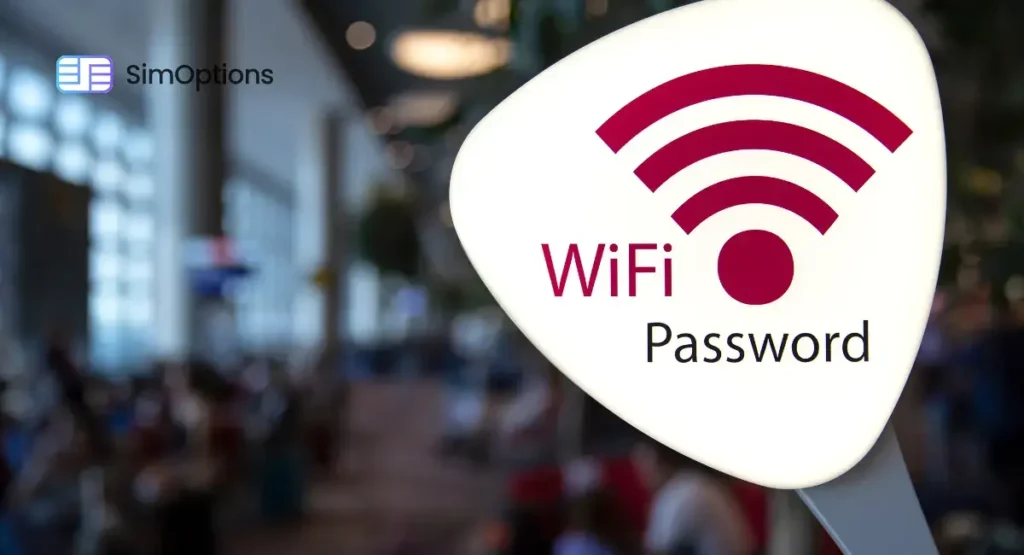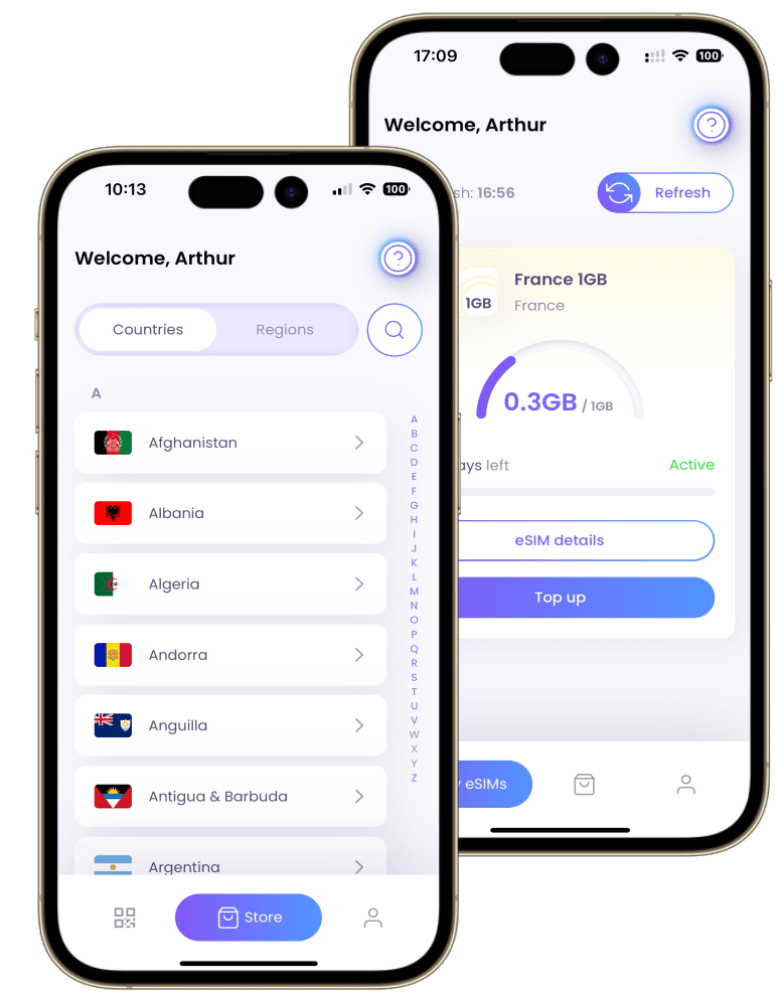9 International Roaming Saving Tips: Budget Travelers Should Know!
Most budget travelers overspend on mobile costs because they underestimate roaming charges. This happens because most need to explore cost-effective alternatives, leading to inflated bills and reduced travel funds.
This is why understanding how to slash these costs is crucial. We’re going to walk you through:
- Utilizing Wi-Fi Hotspots
- Leveraging Local SIM Cards
- Monitoring Data Usage Closely
- Investing in a Portable Wi-Fi Device
- Making Calls During Off-Peak Hours
- Opting for Messaging Apps Over SMS
- Tracking and Limiting Social Media Use
- Disabling Data Roaming and Background Data
- Researching and Choosing International Roaming Packages Wisely
Mastering these strategies will help you save money, stay connected, and enjoy peace of mind, ultimately leading to a more fulfilling travel experience.
Let’s dive into the first critical step.
1. Utilize Wi-Fi Hotspots
Wi-Fi hotspots are a traveler’s best friend for free internet access. Wi-Fi hotspots in cafes, hotels, and public spaces are a goldmine for budget travelers. By using Wi-Fi, you can avoid the high costs associated with data roaming.
The key benefit here is the substantial reduction in your data plan usage, translating into savings. However, be cautious of unsecured networks, as they pose security risks.
Always ensure the Wi-Fi connection is secure before logging in. While café-hopping in Rome, most tourists used free Wi-Fi hotspots to upload their travel vlogs, saving considerable data charges.
Wi-Fi hotspots are your gateway to cost-effective internet service usage while traveling.
2. Leverage Local SIM Cards
Switching the phones to a local SIM card upon arrival can dramatically reduce roaming charges. When you land in a new country, one of the smartest moves you can make is to purchase a local SIM card. Local SIMs offer significantly lower calls, texts, and data rates nationwide.
By doing this, you save money and gain the flexibility of local communication cellular data options. However, ensure your phone is unlocked and compatible with local networks to avoid connectivity issues.
A practical tip is to research and buying a local SIM card online before traveling or immediately upon arrival. This approach is not just about saving money; it’s about smart traveling.
3. Monitor Data Usage Closely
Regularly monitoring cellular data usage keeps your expenses in check. Keeping an eye on your data usage is vital for staying within your travel budget.
Your smartphone’s built-in data usage tracker is helpful for this purpose. Resetting the tracker at the start of your trip ensures accurate monitoring.
Regular monitoring is your best defense against unexpected mobile expenses.
4. Invest in a Portable Wi-Fi Device
A portable Wi-Fi device offers a reliable and cost-effective internet connection.
For constant and secure internet access, consider a portable Wi-Fi device. These devices provide internet connectivity without relying on public Wi-Fi or expensive international data roaming.
However, it’s essential to check the coverage and speed of your destination before investing. On a family road trip across the U.S., Kevin used a portable Wi-Fi device for uninterrupted connectivity, showcasing its practicality.
A portable Wi-Fi device is a valuable investment for frequent travelers.
5. Make Calls During Off-Peak Hours
Calling during off-peak hours can significantly save roaming charges for international plans. Timing your calls can also lead to substantial savings.
Roaming rates between countries and destinations are often lower during specific times of the day.
This strategy requires awareness of your destination’s time zone differences and peak hours.
Strategic timing of your calls is a simple yet effective way to reduce roaming charges.
6. Opt for Messaging Apps Over SMS
Messaging apps can drastically cut costs compared to traditional SMS while roaming between countries In the era of digital communication, relying on SMS can be a costly mistake.
Messaging apps like WhatsApp or Telegram use minimal data and often work efficiently on Wi-Fi. The benefit is clear: cost-effective and sometimes free communication.
Make sure to download and set up these apps before your trip. Choosing messaging apps over SMS is a no-brainer for the modern traveler.
7. Track and Limit Social Media Use
Mindful social media use can greatly reduce unnecessary data consumption. Finally, social media platforms are major data consumers. Adjusting app settings to lower data usage can be beneficial.
Responsible social media usage is critical to managing your data consumption effectively.
8. Disable Data Roaming and Background Data
Turning off unlimited data roaming and background data prevents unexpected charges. One simple yet effective strategy is to turn off data roaming and background data. This move is crucial as apps running in the background can use data without your knowledge.
By controlling these settings, you can avoid surprise bills. Remember to disable these settings before departure.
Controlling your data settings is a key step in managing your travel expenses.
9. Research and Choose International Roaming Packages Wisely
Selecting an international plan with the right roaming package can mean significant savings. Before traveling, it’s essential to research the roaming packages offered by your mobile provider.
These customized plans can cater to your specific travel needs, making them a financially wise choice. However, compare options before choosing a plan.
Choosing the right roaming package is crucial in cost-effective international travel and communication.
Use these strategies to cut your international roaming expenses and travel without the stress of high phone bills abroad.











